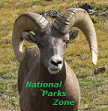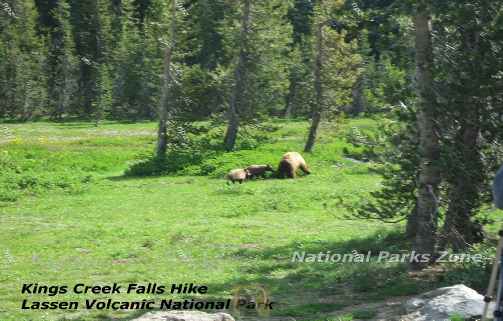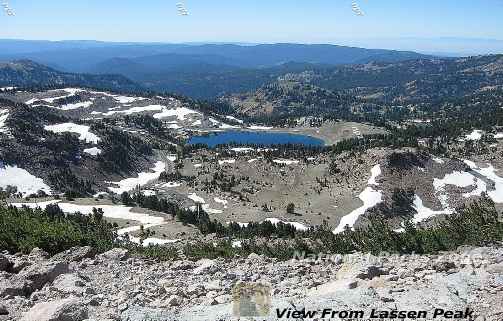Copyright © 2014-
All Rights Reserved

Updated 02/11/23 7:04 PM
Other Resources
Lassen Volcanic National Park on the National Parks Service Website -
Lassen Volcanic National Park -
Lassen Volcanic National Park -
Lassen Volcanic National Park -
Lassen Volcanic National Park -
Geothermal Areas of Lassen -
Drakesbad Guest Ranch -
Drakesbad Guest Ranch -
Newberry National Volcanic Monument -
Lassen Volcanic National Park
Northern California's Lassen Volcanic National Park is home to Lassen Peak, the southernmost non-
California
2011
About The Park
Lassen Volcano is at the southern end of the Cascade Mountains and began erupting 825,000 years ago. From 1914 to 1921, there were a series of minor to major eruptions. The largest eruption was in May, 1915 which blew an ash cloud 30,000 feet into the air. A local businessman photographed the eruption and his photos became the impetus for the creation of Lassen Volcanic National Park in 1916 as America’s 15th national park to preserve this beautiful volcanic landscape.
Lassen is not well known among the general public. Most people had never heard of it when I visited it in 2011. With only about 500,000 visitors a year it ranked 37th on the list of most visited national parks although it is one of the oldest.
In addition to the volcanoes, Lassen has steaming fumaroles, beautiful, clear mountain lakes and meadows filled with wildflowers.
It is the largest hydrothermal area west of Yellowstone National Park. You can see steam vents, bubbling mud pots, hot springs and boiling pools.
Represented in the park are all four types of volcanoes found in the world: shield, composite, cinder cone, and plug dome. A volcano may have a vent, a crater (caldera), peak or lava dome which is sometimes known as a plug dome. The plug dome results from highly viscous lava being extruded from the volcano. This type of lava barely flows at all and accumulates as a dome at the top of the volcano. Lassen Peak is the largest plug dome volcano in the world.
WARNING! The parks thermal features can be extremely dangerous and you should never leave the boardwalks around them. What looks like solid ground may just be a cryptobiotic crust that will crumble under your feet and plunge you into boiling water that can reach 250°F. People have been severely injured by them. Definitely keep your hands on small children at all times and read the National Parks Service information on this.
Points of Interest
Bumpass Hell
This is the largest and most visited hydrothermal area in the park. You walk along boardwalks and see bubbling mud pots and steam rising from vents. One of the main features is a large, high velocity steam jet, called Big Boiler, where the water temperature has been measured as high as 322°F (161 Celsius) which makes it one of the hottest in the world.
Lassen Peak
Also called Mount Lassen, this volcano is still considered alive but sleeping. It has an active magma chamber under the ground and is still capable of eruptions. As such, it is continuously monitored. The lava dome at the top is considered the biggest in the world. Mount Lassen and Mount Saint Helens are the only two volcanoes in the lower 48 states to erupt in this century.
Sulphur Works
This is a hydrothermal area between Lassen Peak and Brokeoff Mountain. Located next to the park road, it is the easiest of the hydrothermal areas to access. It contains boiling pools and mud pots and, if the wind is not in your favor, the smell of sulphur can be overwhelming.
Hot Rock
Toward the northern end of the park road there is a huge 300 ton boulder that sits right by the side of the road. It is from the eruption of 1915 and it came cascading down the mountain and came to rest here, five miles away! When it was first seen it was still sizzling and probably took some time to cool down. It thus became known as the Hot Rock.
Little Hot Springs Valley
You can view the valley from an overlook on the park road just a few miles up from the southwest entrance station. There are no trails into the valley but, with binoculars, you can see the steam vents.
Wildlife
Among the mammals commonly found in the park are black bear, mule deer, marten, chipmunk, raccoon, pica, squirrels, including the golden-
Lodging
There is no typical national parks lodge within the park itself. The other options are:
Drakesbad Guest Ranch
This is a rustic upscale place to stay complete with a dinner bell (meals included). Located in Warner Valley, in the southeast corner of the park, and not served by the main park road, it is a difficult place to get to. I looked into staying there but found that it is accessed via a graded road for about 13 miles and from the ranch it is about an hour’s drive to the main entrance to the park. Adding two hours of driving to each day that I wanted to tour the park from along the park road was a deal-
The more expensive accommodations have a bath and shower. There are also cabins with only a toilet and sink and communal showers. The ranch has a swimming pool, horseback riding and hiking trails.
The place has been a guest ranch since the 1880’s. It is on the National Register of Historic Places and a Los Angeles Times Travel feature once listed it as one of the top 15 places in California to visit.
Manzanita Camping Cabins
The Manzanita Camping Cabins are rustic cabins located at the northeast entrance to the park by Manzanita Lake. While they are new and inexpensive they do not have their own bathroom or shower and you must bring your own bedding. They provide three-
Chester, California
re are several motels in Chester, which is about 27 miles from the park entrance. On my visit in 2011 I stayed at the Best Western Quartz Inn. It was typical of Best Western standards and our stay was fine.
Hiking
Bumpass Hell Trail
This is relatively easy 3-
Kings Creek Falls Trail
This about a 2.5 to 3 mile loop through a meadow, some stone staircases and culminates at the 30 foot high falls. There is a fenced in viewing area at the top and the falls are impressive. This is a forest trail so it is a good place to be on a hot day.
Hat Lake to Paradise Meadow Trail
This is a moderate, roughly 3-
Lassen Peak Traiil
The Lassen Peak Trail is a 5-
Pacific Crest Trail
The trail winds 17 miles through the park and getting to it would require hiking several miles on one of the trails off the main park road. It passes close to the Drakesbad Guest Ranch (see below) in the Warner Valley and is easily accessed from there if you are staying there.
Devil’s Kitchen Trail
This is about a 4½ mile out-
Lassen Volcanic National Park Photo Gallery


Other National Parks and National Monuments Within a Day’s Drive
Crater Lake National Park The deep blue waters of this natural wonder is about 250 miles to the north and about a 4.5 hour drive.
Yosemite National Park Home of Yosemite Falls and El Capitan is about 337 miles to the south and about a 6 hour drive.
Redwoods National Park Here you can see the world’s tallest trees is about 245 miles to the northwest and about a 4.5 hour drive.
Pinnacles National Park Where ancient volcanic spires can be found is 400 miles to south and about a 6.5 hour drive.
Lava Beds National Monument Located in California about 147 miles north. It is a stark volcanic landscape of black lava rocks and lava tubes. There is a one-
Newberry National Volcanic Monument A volcanic landscape that was used for training Apollo astronauts. It is located 317 miles north, about a 6 hour drive, and is dominated by the 7,985 foot Paulina Peak which you can drive to the top of for outstanding views.
*N*P*Z*
National Parks Zone